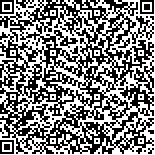下载中心
优秀审稿专家
优秀论文
相关链接
摘要

蒸散发是水圈、大气圈和生物圈中水分循环和能量交换的纽带。在全球尺度上,蒸散发约占陆地降水总量的60%;作为其能量表达形式,潜热通量约占地表净辐射的80%。随着通量观测技术的发展,全球长期持续的观测数据得以获取和共享,近年来基于数据驱动的蒸散发遥感反演方法取得了较好的研究进展。本文针对数据驱动的蒸散发遥感反演方法和产品,从经验回归、机器学习和数据融合3个方面展开,对现有的研究进展进行了梳理、归纳和总结,并从驱动数据、反演方法、已有产品等方面指出目前仍存在的问题和不足。未来仍需开展数据驱动的高时空分辨率的蒸散发遥感反演方法的研究,有效考虑地表温度和土壤水分等可以指示地表蒸散发短期变化的重要信息,同时加强基于过程驱动的物理模型与数据驱动的模型的结合,使两类模型能互为补充、各自发挥所长,共同推动蒸散发遥感反演研究水平的进步。
Evapotranspiration (ET) links the water cycle and energy exchange in hydrosphere, atmosphere, and biosphere. From a global perspective, ET accounts for approximately 60% of the total land precipitation, and the latent heat accompanying ET accounts for approximately 80% of the total surface net radiation energy. With the development of eddy covariance technology, global long-term and continuous observed meteorological and flux data are publicly available online. In last decade, data-driven remotely sensed ET retrieval methods have achieved rapid development. In terms of data-driven remotely sensed retrieval ET, this paper reviews and summarizes the existing researches on empirical regression methods, machine learning methods, data fusion methods and their corresponding products, then points out the existing problems and deficiencies on the driven data, retrieval methods, and available products. To be specific, these problems include: (1) There are few data-driven remotely sensed ET products with high precision and high spatiotemporal resolution; (2) The spatial scale mismatch between satellite pixel and in situ measurements makes the data-driven remotely sensed ET estimates challenging; (3) The lack of physical mechanisms for the data-driven remotely sensed retrieval ET methods and the insufficient regional representativeness for observed data from hundreds of sites, the spatial application of the ET model is limited; (4) Several important driving factors of ET, such as land surface temperature and soil moisture, were not sufficiently considered in previous studies; (5) The energy balance at flux measurement sites that based on eddy covariance method is not closed with about 0.8 unclosed rate globally, whether carry out energy balance closure correction before modeling is still a controversy; (6) The partitioning between soil evaporation and vegetation transpiration is of great significance, but the data-driven remotely sensed models that could estimate soil evaporation and vegetation transpiration respectively were not well studied. In the era of big data, as a double-edged sword, data-driven approaches are not only opportunities but also challenges, and several suggestions for future studies are proposed at the end. To begin with, the data-driven remotely sensed retrieval ET methods with high spatiotemporal resolution should be proposed. The observed source area should be introduced into the model constructing to solve the mismatch between satellite pixel and the measurements so as to improve the estimated ET accuracy. In addition, some important information, such as land surface temperature and soil moisture, which has an important effect on ET process should be taken into consideration effectively. Although vegetation index could indicate the long-term change of ET, land surface temperature could better indicate its short-term change. At the same time, soil moisture deficit would produce water stress on ET. Effective consideration of land surface temperature and soil moisture may improve the estimation accuracy of ET. Last but not least, it's important to emphasize that data-driven empirical approaches will not replace process-driven physical models, but strongly supplement and enrich the ET estimation methods. The combination of process-driven physical models and data-driven empirical approaches should be strengthened in order to obtain more reliable and accurate ET estimation by remote sensing. One suggestion is that, in future studies, data-driven approaches should be used to estimate important variables that closely related to ET but unavailable directly from remote sensing satellite at present, then physical models could be used for ET estimation. So as to the two kinds of models can fully play their roles respectively, jointly promote the research level of remotely sensed retrieval ET.

